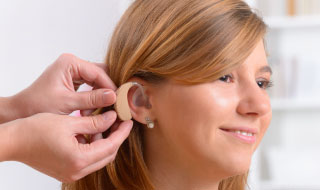 Buying a hearing aid can be a challenging process. Because some hearing problems can be medically corrected, having a full evaluation by an ENT physician will help put you on the right track.
Buying a hearing aid can be a challenging process. Because some hearing problems can be medically corrected, having a full evaluation by an ENT physician will help put you on the right track.
Once the audiological and medical evaluations have been completed and your needs evaluated, we will help you to determine if hearing aids would be beneficial. In our consultation with you, some of the following items will be discussed:
- Hearing test results describing the type and degree of hearing loss
- One versus two hearing aids
- Style of hearing aid
- Your lifestyle communication demands
Fortunately, our licensed audiologists can recommend and dispense the latest hearing technology. Because federal regulation prohibits any hearing aid sale unless the buyer has first received a medical evaluation from a physician, you will need to see your physician before you purchase a hearing aid(s).
There are many different types of hearing aids:
- In-the-canal and completely-in-the-canal aids: These aids are contained in a tiny case that fits partly or completely into the ear canal. They are the smallest aids available and offer cosmetic and some listening advantages.
- In-the-ear aids: All parts of the aid are contained in a shell that fills in the outer part of the ear. These aids are larger than canal aids, and for some people may be easier to handle than smaller aids.
- Behind-the-ear aids: All parts are contained in a small plastic case that rests behind the ear; the case is connected to an earmold by a piece of clear tubing. This style is often chosen for young children for safety and growth reasons.
- Receiver-in-the-ear (RITE): These are probably the most popular type of hearing aids in today’s market. Cosmetically excellent, with state-of-the art technology.
There are hearing aids available that can accommodate virtually any kind of hearing loss!
